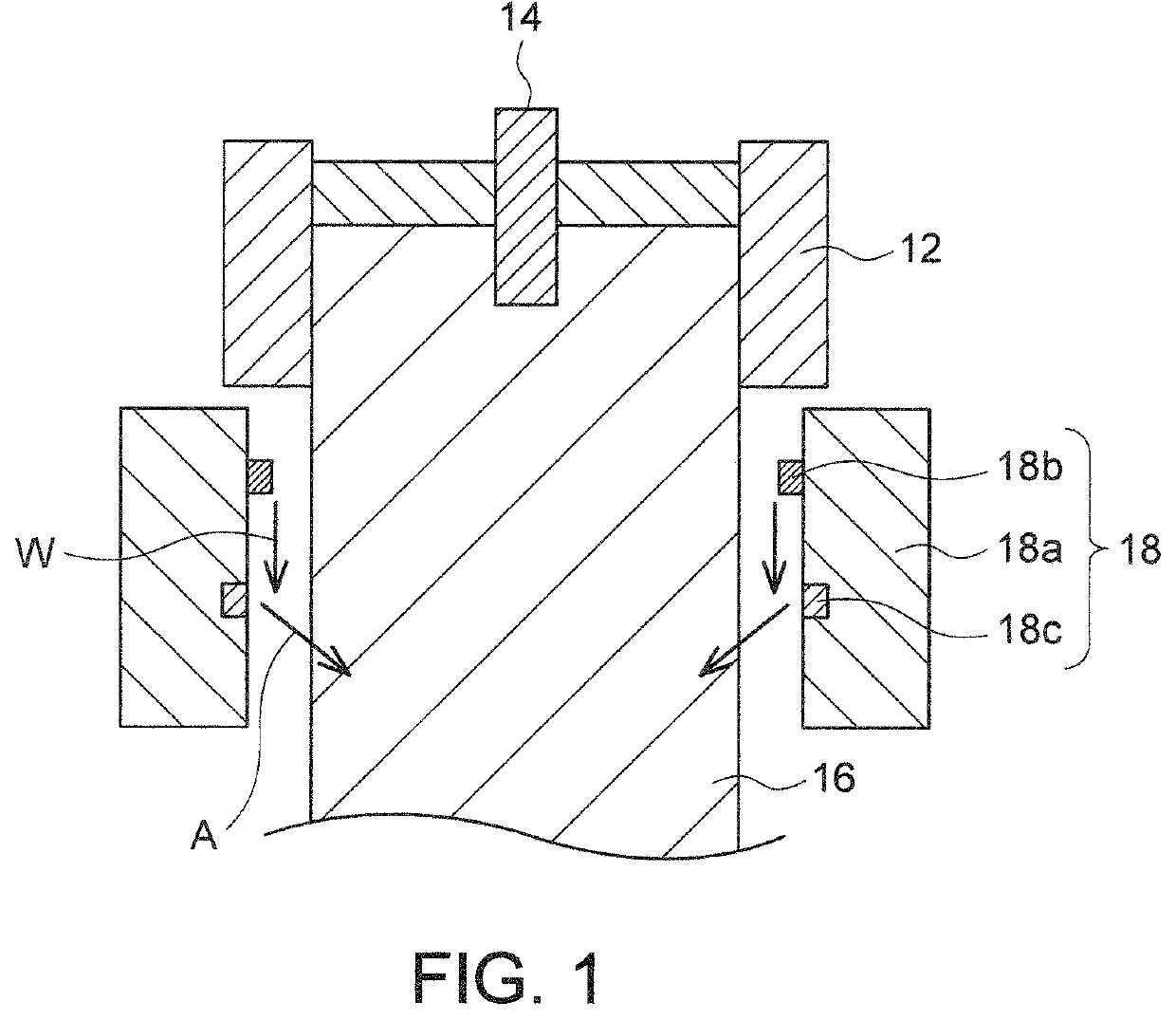Method for producing Cu—Ni—Sn alloy and cooler to be used for same
a technology of sn alloy and cu, which is applied in the field of producing cu — ni — sn alloy and a cooler, can solve the problems of deteriorating the product quality of the alloy to be obtained, poor alloy production efficiency, and internal cracks in the ingo
- Summary
- Abstract
- Description
- Claims
- Application Information
AI Technical Summary
Benefits of technology
Problems solved by technology
Method used
Image
Examples
example 1
Comparison
[0041]Cu-15Ni-8Sn alloy defined as UNS: C72900 was prepared as a Cu—Ni—Sn alloy and evaluated by the following procedures.
[0042](1) Weighing
[0043]A pure Cu nugget, a Nickel metal, a Sn metal, manganese tourmaline, and a Cu—Ni—Sn alloy scrap, which are raw materials for a Cu—Ni—Sn alloy, were weighed in such a way as to obtain an objective composition. That is, Cu in an amount of 163 kg, Ni in an amount of 30 kg, Sn in an amount of 15 kg, and the Cu—Ni—Sn alloy scrap in an amount of 1450 kg were weighed and mixed to be thereby formulated.
[0044](2) Melting and Slag Treatment
[0045]The weighed raw materials for a Cu—Ni—Sn alloy were melted in a high-frequency melting furnace for atmospheric air at 1200 to 1400° C. and stirred for 30 minutes to homogenize the components. Slag scraping and slag scooping were performed after completion of melting.
[0046](3) Component Analysis (Before Casting)
[0047]Part of the Cu—Ni—Sn alloy obtained by performing the melting and the slag treatment...
example 2
[0060]Preparation and evaluations of a sample were performed in the same manner as in Example 1, except that mist cooling was performed in the following manner in place of the water cooling of (5) described above. The obtained cast product had a size of 320 mm in diameter×2 m in length.
[0061](5′) Cooling (Mist Cooling)
[0062]The solidified ingot 16 was continuously drawn out while mist-like water was being sprayed with the cooler 18 provided immediately below the mold 12, as schematically shown in FIG. 1. On that occasion, by discharging 7 to 13 L / min of water W from the water supply part 18b which is at the upper part of the cylindrical main body 18a of the cooler 18, and blowing air A at a pressure of 2.7 to 3.3 MPa from 120 holes each having a diameter of 3.5 mm, the holes each provided as the air ejection part 18c at the lower stage of the cylindrical main body 18a of the cooler 18, discharged water W was atomized into mist-like water (namely, mist) and was sprayed on the ingot 1...
example 3
Comparison
[0063]Preparation and evaluations of a sample were performed in the same manner as in Example 1, except that air cooling was performed in the following manner in place of the mist cooling of (5) described above. The obtained cast product had a size of 320 mm in diameter×2 m in length.
[0064](5″) Cooling (Air Cooling)
[0065]The solidified ingot was continuously drawn out while air was being blown with the cooler provided immediately below the mold. On that occasion, air was blown from 120 holes each having a diameter of 3.5 mm, the holes provided at the cylindrical main body of the cooler, and the ingot was lowered while being received with a receiving table which was lowered at a speed of 25 mm / min. By such a cooling method, the ingot was cooled to 50° C. in 12 hours after the semi-continuous casting of (4) described above. In the case of air cooling, it can be said that the speed of cooling the ingot is slow, and therefore, the internal cracks are unlikely to occur, but the...
PUM
| Property | Measurement | Unit |
|---|---|---|
| speed | aaaaa | aaaaa |
| temperature | aaaaa | aaaaa |
| temperature | aaaaa | aaaaa |
Abstract
Description
Claims
Application Information
 Login to View More
Login to View More - R&D
- Intellectual Property
- Life Sciences
- Materials
- Tech Scout
- Unparalleled Data Quality
- Higher Quality Content
- 60% Fewer Hallucinations
Browse by: Latest US Patents, China's latest patents, Technical Efficacy Thesaurus, Application Domain, Technology Topic, Popular Technical Reports.
© 2025 PatSnap. All rights reserved.Legal|Privacy policy|Modern Slavery Act Transparency Statement|Sitemap|About US| Contact US: help@patsnap.com


